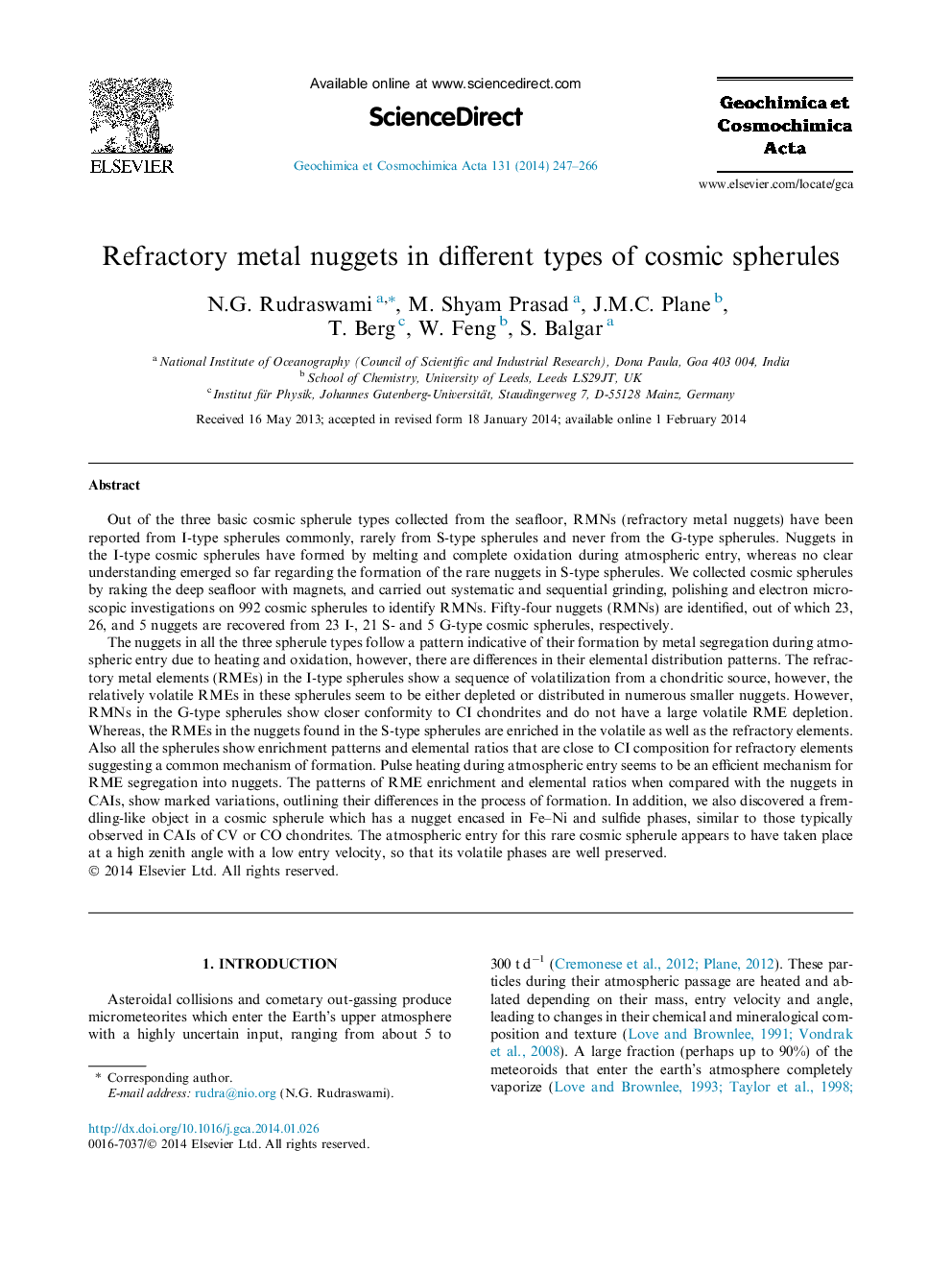| Article ID | Journal | Published Year | Pages | File Type |
|---|---|---|---|---|
| 6438637 | Geochimica et Cosmochimica Acta | 2014 | 20 Pages |
Abstract
The nuggets in all the three spherule types follow a pattern indicative of their formation by metal segregation during atmospheric entry due to heating and oxidation, however, there are differences in their elemental distribution patterns. The refractory metal elements (RMEs) in the I-type spherules show a sequence of volatilization from a chondritic source, however, the relatively volatile RMEs in these spherules seem to be either depleted or distributed in numerous smaller nuggets. However, RMNs in the G-type spherules show closer conformity to CI chondrites and do not have a large volatile RME depletion. Whereas, the RMEs in the nuggets found in the S-type spherules are enriched in the volatile as well as the refractory elements. Also all the spherules show enrichment patterns and elemental ratios that are close to CI composition for refractory elements suggesting a common mechanism of formation. Pulse heating during atmospheric entry seems to be an efficient mechanism for RME segregation into nuggets. The patterns of RME enrichment and elemental ratios when compared with the nuggets in CAIs, show marked variations, outlining their differences in the process of formation. In addition, we also discovered a fremdling-like object in a cosmic spherule which has a nugget encased in Fe-Ni and sulfide phases, similar to those typically observed in CAIs of CV or CO chondrites. The atmospheric entry for this rare cosmic spherule appears to have taken place at a high zenith angle with a low entry velocity, so that its volatile phases are well preserved.
Related Topics
Physical Sciences and Engineering
Earth and Planetary Sciences
Geochemistry and Petrology
Authors
N.G. Rudraswami, M. Shyam Prasad, J.M.C. Plane, T. Berg, W. Feng, S. Balgar,
